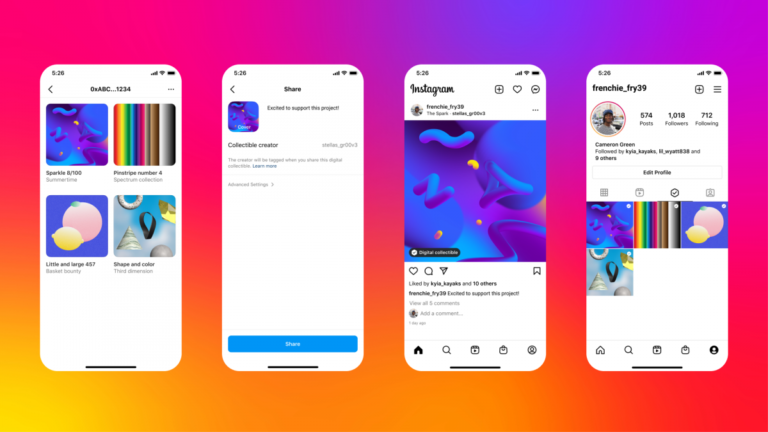Summary
Users download the app and purchase Sneaker NFTs to begin participating. Each day, users can earn token rewards for completing fitness challenges around walking, jogging, and running. These rewards can then be used on in-game to level up a Sneaker NFT or mint new Sneaker NFTs, or they could be sold on the secondary market for other tokens and stablecoins. The more the users engage in physical activity, the more rewards they can earn, including rare NFTs and governance tokens.
Overview
Most Game-Fi applications face the same challenges around playability, profitability, and accessibility and developers must make a choice amongst these three core components. One common approach is to design a Game-Fi application to be very profitable in the hopes of gaining traction and mass adoption. The problem here is that developers put the core focus on the rewards rather than the actual game, which creates a significant shift in user behavior once the incentives to play are taken away. Systems designed in this manner require constant player rewards which leads to inflationary pressure and dilution, and in the long run often fail.

STEPN has developed a Game-Fi approach that attempts to solve this trilemma by creating an immersive user experience that is actually enjoyable to play, easily accessible, and has a carefully designed rewards structure that keeps players engaged. Joining the space is simple and straightforward. Users begin by downloading and installing the STEPN app, which tracks and reports daily physical activity. Upon completing registration, users then create a wallet to send, receive, and store the tokens they earn. Once this process is completed, users then transfer digital assets into their STEPN wallet to purchase an NFT in the STEPN marketplace. This NFT is in the form of a sneaker and is at the core of enabling a fully immersive, gamified experience. Once the sneaker NFT is purchased, the user can begin to participate and earn rewards.
Part of the mechanism design used here limits how frequently users can earn rewards. For instance, once the initial sneaker NFT is purchased, the user has to accumulate “energy” to engage in rewards-based physical activity. STEPN enforces a recharge rate of 25% every 6 hours. Users must wait until they finished their first 25% energy restoration before they can begin. Baseline energy levels are also quite low so users must interface with the app in order to increase their energy levels and thereby increase their ability to earn rewards.
In terms of the user experience and playability, there are a variety of different modes that a user can choose from, each with its own unique incentive design. In Solo Mode, for instsance, users earn tokens by moving. Users begin with a certain energy level which depletes over time as they are active. Each bar of energy equals 5 minutes of movement. Once a user’s energy level is fully depleted, they must wait for it to recharge. Energy only recharges after the user acquires an NFT Sneaker. In addition to token rewards, users also have the change to randomly receive a “mystery box.” These boxes function as a loot crate and contain various items that can be used in game to boost rewards and improve the user’s experience. Upcoming releases include Marathon Mode, which enables users to participate in weekly or monthly marathons and compete against their peers to earn rewards, as well as Background Mode, which functions as a staking mechanism and lets users passively earn tokens when they are not engaging in physical activity.

One of the core mechanics of the game is around the Sneaker NFT. Each of these NFTs contains various attributes that can boost player rewards. For instance, a sneaker with a higher luck attribute is more likely to yield a loot crate upon completion of a quest, while a sneaker with higher efficiency will earn more rewards per energy spent. Resilience is another important attribute and reduces the Sneaker’s decay rate. One of the ways that STEPN is able to manage inflation is through the implementation of a token burning mechanism that centers on Sneaker depreciation. The more a user is active, the more a Sneakers’ durability attribute decreases. Once durability is below certain thresholds, then different penalties are tacked on that impact user rewards. For instance, at 50% durability, Sneaker efficiency drops to 90%, while at 20% durability, Sneaker efficiency drops to 10%. So the penalties can be quite severe and serve as an incentive for users to ensure that their Sneakers have sufficient durability.
Leveling up Sneakers is another mechanism that keeps downward pressure on inflation. Similar to traditional RPGs that leverage experience to build character attributes, users earn $GST through activity and completing quests, and can then burn their tokens to level up their sneakers. The amount of $GST required progressively increases with each level. The key benefit is that Sneakers gain additional attributes which can then be assigned by the user to further boost rewards or increase yield efficiency.
One last feature of note is NFT minting. STEPN’s shoe minting mechanic functions similarly to breeding on other gamified NFT platforms such as CyberKongz. In short, users combine 2 NFTs and pay a fee to mint a new NFT. The attributes of the origin NFTs influence the newly minted NFT so users have an incentive to maximize Sneaker levels and attributes before breeding, particularly because each Sneaker NFT is limited to 7 mints.
Game-Fi Mechanics: A Deeper Look
Different modes have different restraints on token rewards. For instance, in Solo Mode, users begin with 2/2 energy levels and can increase these levels to 20/20 by equipping better sneakers. Users also begin with a 5/5 daily $GST limit, which also can be increased to 300 $GST and 15 $GMT by equipping different equipment, such as leveled up Sneakers.
In addition, STEPN implements a carefully designed “Energy System” that helps balance rewards and engagement, Again, players begin with 2/2 energy levels and can increase their maximum energy in a variety of ways. For instance, owning one Legendary Sneaker increases the user’s energy to 6/6/. As they engage in different activities, their energy levels deplete. Energy replenishes 25% every 6 hours until it maxes out. Users are incentivized to increase their energy levels so that they can participate in more activities and earn more rewards.
Users can also engage in different quests to earn boosted rewards, airdrops, and unique in-game rewards. Quests are generally broken down on a daily, weekly, monthly, or special event basis. Each type yields its own reward and helps with playability and long-term engagement. Finally, users can complete different achievement goals, such as PvP and grinding times, to earn tradable NFTs, which again helps establish a sense of purpose within the game rather than users simply playing just to go through the motion of playing.
Mechanism Design and Tokenomics
STEPN features two native tokens, $GST and $GMT. The former is the native utility token of STEPN and has an uncapped supply, while the latter is the governance token and has a total supply of 6,000,000,000.

Most of the $GST supply has been allocated to activity mining and ecosystem building, while the majority of the remaining supply has been allocated to the core team and private sale.

Macroview
$GMT has realized significant gains in daily volume and price. Current daily volume is now well over $4.3B while price has nearly tripled to $3 over the last seven days.

The application is invite-only, so users cannot freely join and must instead rely on an existing user or third-party invite them to participate. This gated approach helps keep downward pressure on token price, particularly as first movers trying to engage in as much activity as possible before more user enter the space and potentially increase selling volume.
A key concern, however, is the team’s ability to successfully manage an anti-cheating program. This is perhaps the greatest threat to the success of the ecosystem. While there are a variety of measures in place to prevent this, such as GPS tracking and motion sensor and health data, there are still risks that savvy users could find ways around these methods of prevention.
A secondary concern is rewards balancing and token inflation. While the token price is currently appreciating, the design must be flexible enough to manage a large influx of players as the application gains more traction.
Sources and Further Reading
- https://whitepaper.stepn.com/tokenomics
- https://stepn.com/litePaper
- https://stepnofficial.medium.com/
Cryptofunds, market makers, and trading desks can interact with these DeFi protocols with MetaMask Institutional
MetaMask Institutional offers unrivaled access to the DeFi ecosystem without compromising on institution-required security, operational efficiency, or compliance requirements. We enable funds to trade, stake, borrow, lend, invest, and interact with over 17,000 DeFi protocols and applications.
Found this research useful? Connect with the ConsenSys Cryptoeconomic Research team at [email protected]
ConsenSys Software Inc. is not a registered or licensed advisor or broker. This report is for general informational purposes only. It does not constitute or contain any individual investment advice and is made without any regard to the recipient’s objectives, financial situation, or means. It is not an offer to buy or sell, or a solicitation of any offer to buy, any token or other investment, nor is it intended to be used for marketing purposes to anyone in any jurisdiction. ConsenSys does not intend for any person or entity to rely on any facts, opinions, or ideas, and any financial or economic commentary expressed in this report may not be relied upon. ConsenSys makes no representations as to the accuracy, completeness, or timeliness of the information or opinions in this report and, along with its employees, does not assume any responsibility for any loss to any person or entity that may result from any act or omission based upon this report. This report is subject to correction, completion, and amendment without notice; however, ConsenSys has no obligation to do so.






